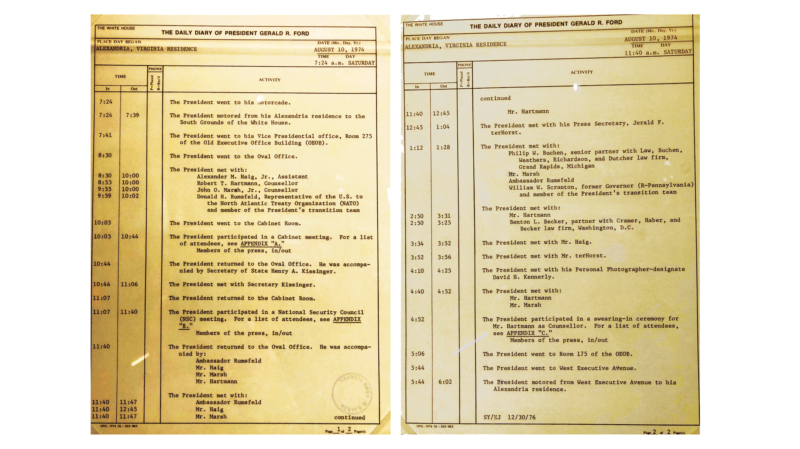
Meetings can be your time to shine. Don’t miss out on opportunities to influence your colleagues and team because you failed to prepare.
Ever sat through a boring meeting? (Silly question … of course you have!)
One of the most frustrating things we do as professionals is have our time wasted in meetings that share one, or a few, of these commonalities:
- The meeting host isn’t prepared
- The meeting lacks a purpose or a goal
- We get stuck in “rabbit hole” conversations
- Not all the decision-makers are present so we can’t move forward
- Too many people in attendance
- The meeting wraps up and no clear actions have been defined
- Too much chit-chat, not enough progress on issues that matter
- Another meeting is scheduled to address items not discussed
Our time is precious. So is our colleague’s. No one wants to lead or attend a boring, pointless meeting, so here’s some guidance relevant to you – a meeting host – or you – as an attendee.
AS A MEETING HOST:
First: Decide Whether to Hold a Meeting or Just Send an Email
Before you even start to create a meeting invite, pause for a second and ask yourself if a meeting is really necessary or if an email can suffice.
A meeting is necessary if:
- There are discussion and/or review items that need a few people’s inputs
- You’re sharing information and there will likely be a Q&A
- You need to coordinate and align actions and activities
Meetings are quite valuable if you’re leading a team; if you have managerial responsibilities, your team does need to connect frequently to reflect, reset priorities, and discuss areas of focus for the near-term and long-term.
But an email can take the place of a meeting if:
- You have a simple message to share (g. benefits enrollment starts next month)
- You want input or feedback on an issue … not a discussion (if you’re getting a lot of input from one individual, this is when you can pick up the phone and call them)
- You’re not prepared to have a meeting and need to reschedule
- No real progress has been made on the past meeting’s agenda items and there’s no point to reconnect
If by going through this checklist you determine that a meeting is necessary, here are five ways to run an effective meeting.
Step 1: Set a Goal
Whenever you think about utilizing the time of other’s, it’s important to think hard about “why” – why are you getting together. Understanding the purpose and intent of your gathering helps you determine 1-2 goals for your meeting, such as:
- We’re going to review last week’s KPI’s and conclude with ideas on how to continue to drive business results
- We need to discuss the new regulations and how they impact our team
- We’re implementing new workplace safety practices and have to discuss how we can involve other departments in these initiatives
Make sure your goal is clearly stated so those you invite have a solid understanding of why they should accept your initiation and what they can expect going into the meeting. Speaking of which …
Step 2: Create an Agenda
Your agenda should be specific to the goals you’re trying to achieve. Creating an agenda in advance will help you determine, too, the length of your meeting – is it really 15 minutes, or will we need 45?
Keep your agenda disciplined. Make sure every line item supports your goal or leads to the conclusion – such as when you can close out the meeting by assigning action items and next steps.
Also, include some meeting “rules” in your agenda, like eliminating mobile devices from the table or not bringing laptops. These types of expectations, communicated up front, set the tone for your meeting.
Your goal and agenda should be in your meeting invite and/or an email sent to participants prior to their attendance. This will ensure that they can prepare to discuss the issue(s) you’d like to connect on.
Step 3: Keep the Invite List Small … but Inclusive
Creating goals and an agenda help you get to thinking about who really needs to be in the meeting. Make sure you don’t get generous with invitations; only invite those whose voice matters to the conversation you’re seeking to hold.
Also, think inclusivity. Maybe there’s someone in another department who should be in attendance, but often gets overlooked. Or maybe there’s someone on your team who serves in a support role that often gets excluded, but whose opinion might be valuable to the conversation. When you lead a meeting, you have to be aware that there might be some bias you hold in your invite list; take time to pull back your lens and assess who’s often overlooked, but has value, to the conversation.
Step 4: Start and End on Time
There’s nothing more annoying than waiting around for five minutes for everyone to join. Start your meetings on time. This conveys respect to those who actually showed up on time. If someone shows up late, they’ll get the message that you’re punctual. If this is a routine habit for them, then this gives you a chance to have an accountability conversation.
Also, end on time. Many of us book our meetings back-to-back. Don’t let your poor time management impact the time of those around you.
Here’s another key point: if you can end early, end early. People love to receive the gift of time. If you’ve blocked an hour, and you only use 40 minutes, great! That gives those around you 20 minutes extra to knock out a few emails or start working on their tasks from the meeting.
Step 5: Recap and Give Direction
Make sure you spend an appropriate amount of time at the end of the meeting summarizing what was discussed and making it clear who’s going to do what by when. This type of clarity creates an opportunity for follow up and accountability.
It’s often appropriate, too, to send a follow up email with items discussed, agreed upon, conclusions made, as well as deadlines and deliverables. This type of documentation helps reinforce expectations.
AS A MEETING ATTENDEE:
Your leadership isn’t just on display when you lead a meeting; a prepared, energized attendee can make a real difference anytime a group gets together. Here are several tips to help you bring your best to any meeting you attend.
To attend or not attend?
So, sometimes you don’t have a choice. Your presence has been requested and you must go.
There are times, though, when you’ll get a seemingly random invite. Before you hit accept, make sure you understand why you’re attending. If there’s no goal or agenda, reach out to the meeting host and inquire politely about the focus for the meeting. Here’s some sample language:
Hey, thanks for the meeting invite. I enjoy working with you and your team. Before I click “accept,” I’m hoping to get a sense of what this meeting will entail. I want to ensure I come prepared to add value to the meeting.
If you’re not satisfied with what you hear back, this could be another chance to send a professional (and polite) decline. Here’s some sample language:
It sounds as if it might be a little early to involve me/my team. Why don’t I just follow up with a phone call after you wrap up the meeting and we can go from there? Would that work?
You’re not a jerk if you’re declining; just make sure your decline is respectful and conveys a sense of openness for future collaboration.
Read and Research
Prior to attending a meeting, even if it’s just a team meeting, do your homework. Read the agenda, review items connected to you. Research – aka “dig in” – to items you’re not certain about.
Your value to your team is your brain; your talents are on display every time you engage with your team. This is your time to show your professionalism, your value, your curiosity, your interest, and your greater commitment to results. Don’t let poor preparation stand in your way of letting your performance shine through.
Support the Agenda
Often times in meetings there are points or questions we have that are actually better sidebar conversations that are best held after the meeting. Don’t take the time of others to focus on your specific challenges/issues. Instead, think of questions/challenges/issues that relate to the greater group – that will add value to the meeting.
Also, especially when you’re in a meeting led by someone who’s an inexperienced facilitator, do your part to get the meeting back on track when it’s at risk of going down a rabbit hold. Here are some sample phrases:
Those sound like important points; though, they may need to be addressed in future sessions. Let’s continue to focus on these goals during our time together.
It sounds like you have some department-specific issues that need to be addressed; perhaps you two should connect after this session?
I believe a few of us have hard stops at the top of the hour. Perhaps we should get back to our agenda?
Assertions such as these might seem very direct; yet, when you offer them in a helpful, supportive manner, it helps ensure that everyone gets back on track.
Also, if the meeting is coming close to an end, and it doesn’t seem like there’s going to be a strong “next steps” section, feel free to offer what you’re committing to, such as:
So, here’s what I’ve committed to … x, y, z. I’ll get this to you by xxxxx.
Your leadership helps inspire others to share what they’re committing to.
Meetings: Your Leadership is Needed Regardless of Your Role
Every time you and a team get together, you’ve got a leadership role to play. Meeting leadership is found in both creating and participating in meetings. Proper preparation and intention in both scenarios is not only useful, but it’s much appreciated by those also in attendance.
Best of luck as you continue to influence and inspire in all aspects of your life.
Join tens of thousands of subscribers who receive our free Leadership Moments – quick, actionable leadership guidance delivered to your inbox every Monday.

















